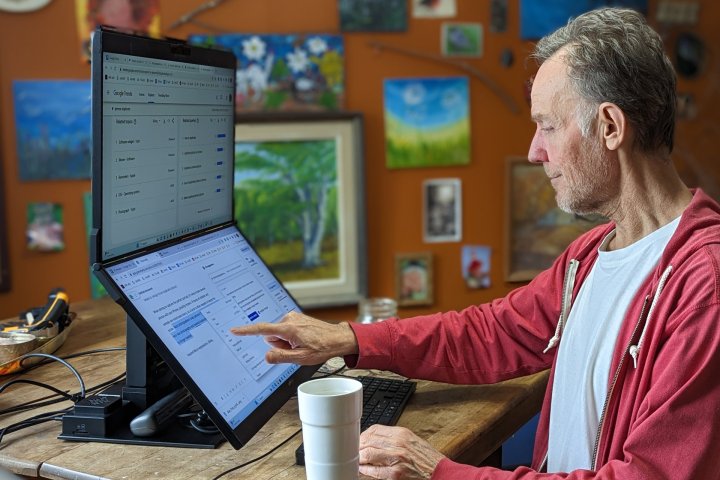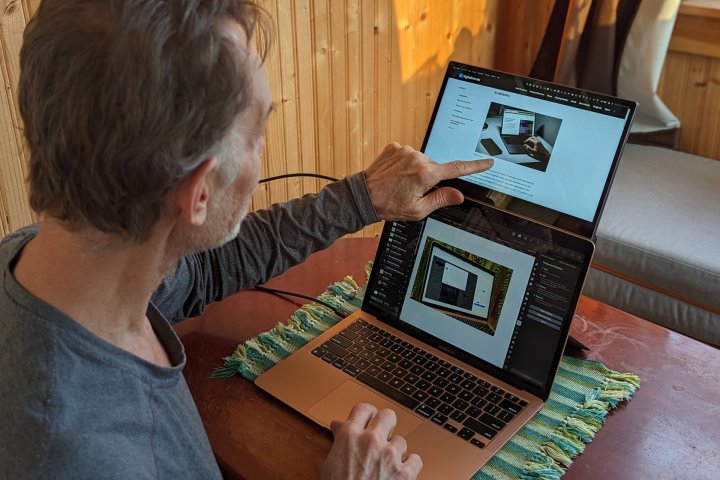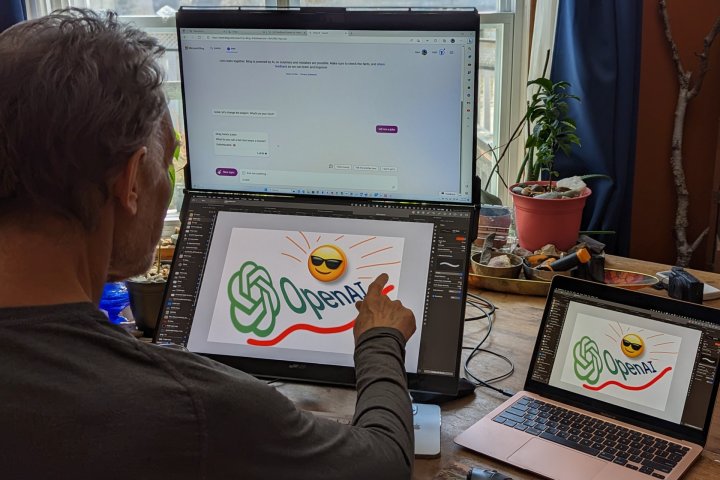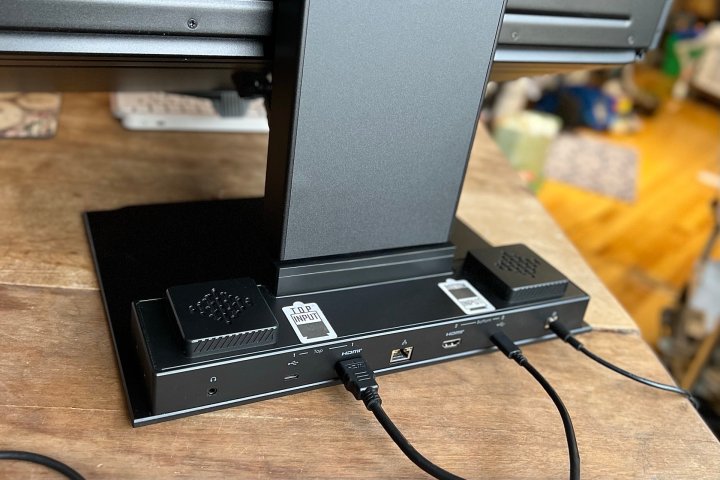Side-by-side monitors are a staple of the modern desk setup. But I, for one, am ready for a shake-up. That made me wonder how stacking monitors vertically might work instead. It’s a lot harder to set up, but then, I came across these dual monitors that were initially launched on Kickstarter. Is this the solution I’d always been looking for?
After spending a number of weeks with these dual, 24-inch monitors, I was surprised how well they streamlined my workflow.
Why stacked is better

Arranging
Multiple
With the Geminos, I can glance down to gather more information or read a chat message without interrupting my workflow on the top monitor. I find vertical

Almost every monitor is nearly twice as wide as it is tall. That means dragging a window or a document to the second screen might be a long journey fraught with the danger of dropping it early and in the wrong place. The Geminos’ stacked screens show the same amount of information in a more accessible arrangement.
There could also be some evolutionary factors at play here. When out on a trail, you must be aware of the terrain at every moment, and what’s directly in front of you is more important than something that’s off to the side.
What goes where?
With this new vertical orientation, you might expect it would take some time to figure out what goes where. In practice, I intuitively arranged windows as if I’d been using stacked screens all along.

I have used a vertical stack of
With the Geminos, I’ve used stacked dual screens daily for the last couple of weeks. I consistently place messaging apps at the bottom so they’re physically closer, but out of my primary view. I also use the lower screen to research information in a browser, so a glance down refreshes my memory or fills in facts. I am most productive on the top screen, writing and working on images. The height is at eye level, perfect for long hours at the computer without neck strain.
Tilt, raise, and touch
Geminos maker Mobile Pixels didn’t just stack one monitor on top of another. The company reinvented the design of dual displays. The Geminos can fold in half, open completely flat, or hold steady at any angle between those extremes.
If I lift the handle on the top, the upper screen raises while the bottom angles to stand upright. When I press down, it lowers smoothly, and the bottom display tilts back to an easel-like angle. I tested the Geminos X model with a touchscreen on the lower monitor. When the monitor ships, it folds completely in half and closes like a laptop.

The touchscreen works with macOS and Windows. Finally, I have a touchscreen Mac experience. Apple didn’t plan for this, so I have to hold the control key while tapping to open a context menu, but most things work as expected. I can use my fingers to paint in Pixelmator Pro, tap to select, and double-tap to open a document. I can even pinch to zoom and drag to scroll.
Special features and connectivity
The Geminos will connect and work right out of the box, but if you install the driver, there are additional options. You can join the top and bottom screens into a single display to stretch a single window across both.
This simulates a large, vertically oriented monitor with 23 inches by 20.5 inches of display space. While a gap bisects the view when used this way, the tiny bezels and edge-mounted hinge minimize this division. I don’t anticipate using this often, but having the option is nice.
The base charges my MacBook while connected and includes a powerful USB hub that provides 100 watts of power via two USB-A ports. With a USB-C adapter, I can charge my iPhone and an iPad, Apple Watch, or Pixel from the Geminos.
The USB ports also allow data transfer. There’s a microSD/SD card reader and an Ethernet port to round out a generous variety of connectivity options for a monitor.
The top monitor has a built-in webcam and mic. I opted for my Insta360 Link webcam since the Geminos webcam quality is one of the few disappointments. Two stereo speakers are placed behind the monitor, muting the sound somewhat. They sound good enough for casual use, but I’d use external speakers or connect

The
There are separate video inputs for the top and bottom. I could connect my MacBook to one screen and my gaming PC to another. The Geminos X has a 75Hz refresh rate (60Hz for the standard model), so you should hold on to your gaming monitor. I mostly game in VR, so a fast monitor isn’t important to me.
If your computer or laptop supports displays over USB-C, a single cable suffices for both
Is it right for you?

The Geminos and Geminos X are versatile and unique
Mobile Pixels is selling the Geminos for $870 right now, a big discount off the manufacturer’s price of $1,383. I suspect it will sell for about $1,000 at other outlets since that was the retail price mentioned on Kickstarter.
The Geminos X is currently out of stock, but the Kickstarter campaign mentioned a price of $1,300 for this higher resolution, touchscreen model.
It might be hard to justify the purchase if you use your computer for browsing and light work. Gamers will want monitors with faster refresh rates and might prefer the widescreen effect when placing
If you use your



